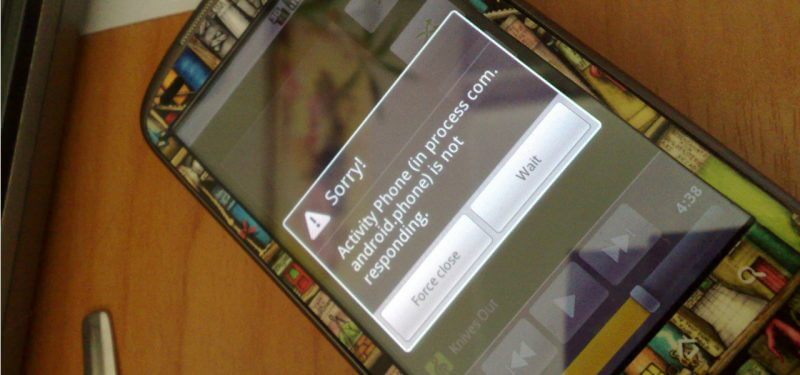Decoding Software Glitches and Crashes: Unveiling Causes and Implementing Solutions for Smartphone Users

Introduction:
In the ever-evolving landscape of smartphone technology, software glitches and crashes are persistent challenges that can disrupt the user experience and hinder productivity. From frozen screens and unresponsive apps to sudden system crashes and reboots, these issues can occur unexpectedly, leaving users frustrated and inconvenienced. In this exhaustive guide, we will explore the diverse factors contributing to software glitches and crashes in smartphones and provide comprehensive solutions to help users troubleshoot and resolve these issues effectively.
Understanding the Causes of Software Glitches and Crashes:
- Incompatible or Outdated Software:
- Installing incompatible apps or outdated software versions can lead to software conflicts and system instability.
- New app updates may introduce bugs or compatibility issues that trigger software glitches and crashes.
- Operating system updates, while intended to improve performance and security, may inadvertently introduce new bugs or compatibility issues.
- Memory Management Issues:
- Insufficient RAM (Random Access Memory) or memory leaks in apps can lead to memory management issues, causing apps to crash or freeze.
- Running multiple apps simultaneously or keeping background processes active can strain the device’s memory resources and exacerbate memory-related problems.
- Poorly optimized apps or resource-intensive tasks may consume excessive memory, leading to performance degradation and system instability.
- Software Bugs and Coding Errors:
- Software bugs and coding errors are common causes of software glitches and crashes in smartphones.
- Developers may overlook edge cases or fail to adequately test software updates, resulting in unexpected behavior and system instability.
- Third-party apps, especially those from less reputable sources, may contain coding errors or malicious code that disrupt system operation and trigger crashes.
- Corrupted System Files:
- Corrupted system files or data corruption within the device’s storage can lead to software glitches and crashes.
- Software updates or installation errors may result in corrupted system files or incomplete installations, causing instability in the operating system.
- Physical damage to the device’s storage, such as a damaged SD card or NAND flash memory, can also contribute to data corruption and system instability.
- Overheating and Hardware Issues:
- Overheating of the device’s hardware components, such as the CPU (Central Processing Unit) or GPU (Graphics Processing Unit), can trigger software glitches and crashes.
- Thermal throttling mechanisms may reduce CPU performance to prevent overheating, leading to performance degradation and instability.
- Hardware issues such as faulty components, damaged circuitry, or defective sensors can exacerbate software-related problems and contribute to system crashes.
Effective Solutions for Software Glitches and Crashes:
- Keep Software Up-to-Date:
- Regularly update the operating system and installed apps to ensure compatibility with the latest software versions.
- Enable automatic updates for both system software and apps to receive timely bug fixes and security patches.
- Monitor app reviews and developer announcements for known issues or compatibility issues with specific device models.
- Optimize Memory Usage:
- Close unused apps and background processes to free up memory resources and reduce the risk of memory-related crashes.
- Use task manager or memory management tools to monitor memory usage and identify memory-hungry apps.
- Consider upgrading to a device with more RAM if memory constraints persist despite optimization efforts.
- Troubleshoot Software Bugs:
- Report software bugs and crashes to app developers or device manufacturers to facilitate bug fixes and software updates.
- Clear app cache and data for problematic apps to reset app settings and resolve potential software conflicts.
- Perform a factory reset on the device as a last resort to reset all software settings and restore system stability.
- Check for System File Integrity:
- Use built-in diagnostic tools or third-party apps to scan for and repair corrupted system files or storage errors.
- Backup important data regularly and perform a factory reset or reinstall the operating system to restore system integrity.
- Replace damaged storage components or seek professional assistance if data corruption persists despite troubleshooting efforts.
- Prevent Overheating and Hardware Issues:
- Avoid exposing the device to high temperatures or direct sunlight for extended periods to prevent overheating.
- Remove protective cases or covers to allow for better heat dissipation and airflow around the device’s hardware components.
- Monitor device temperature using built-in sensors or third-party apps and take appropriate action if overheating occurs, such as closing resource-intensive apps or moving to a cooler environment.
Conclusion:
Software glitches and crashes are inevitable challenges faced by smartphone users, but with proactive troubleshooting and effective solutions, they can be mitigated to enhance system stability and user experience. By understanding the underlying causes of software-related issues and implementing comprehensive solutions, users can minimize disruptions, maximize productivity, and enjoy a smoother smartphone experience. Whether it’s keeping software up-to-date, optimizing memory usage, or troubleshooting software bugs, proactive maintenance and optimization practices are key to resolving software-related problems and ensuring peak performance of smartphones. By following the actionable solutions outlined in this guide, users can overcome software glitches and crashes and unlock the full potential of their smartphones.




